Fort Galle in Sri Lanka, is the largest fort city in Asia.
It was built by the Portuguese, then subsequently taken over by the Dutch and the British, until Sri Lanka gained its independence in 1948. It was a major spice trading port and still today is a center for regional trading spices, Ceylon tea and gems, which Sri Lanka is renowned for. Cinnamon, for instance, is a coveted agricultural product of Sri Lanka today, as it has been for more than 300 years.
 |
| Vintage poster capturing cargo unloading activities at the port of Galle. |
 |
| Sri Lanka is known for its quality tea, in particular Ceylon black tea. |
The architecture of Fort Galle is reminiscent, for us, of other Portuguese enclaves we have encountered during our Green Global Trek – most notably Essaouira in Morocco. Interestingly, muslims who comprise the majority of inhabitants in Fort Galle, trace their lineage to the “Moors”, that is to say to Morocco.
.
We are instantly drawn to Fort Galle. The ramparts provide a beautiful promenade overlooking the waves and jutting rocks to one side, and a mix of Portuguese, Dutch and English Colonial architecture to the other.
.
The ramparts ~ the massive walls of the fortress city built by the Portuguese 500 years ago ~ played a major role in Fort Galle’s most recent history. In 2004, Sri Lanka was hit by a major tsunami. The historic town of Fort Galle was protected by the huge, thick walls of the fort, as compared with the “modern” city which was heavily impacted by the surging waters.
.
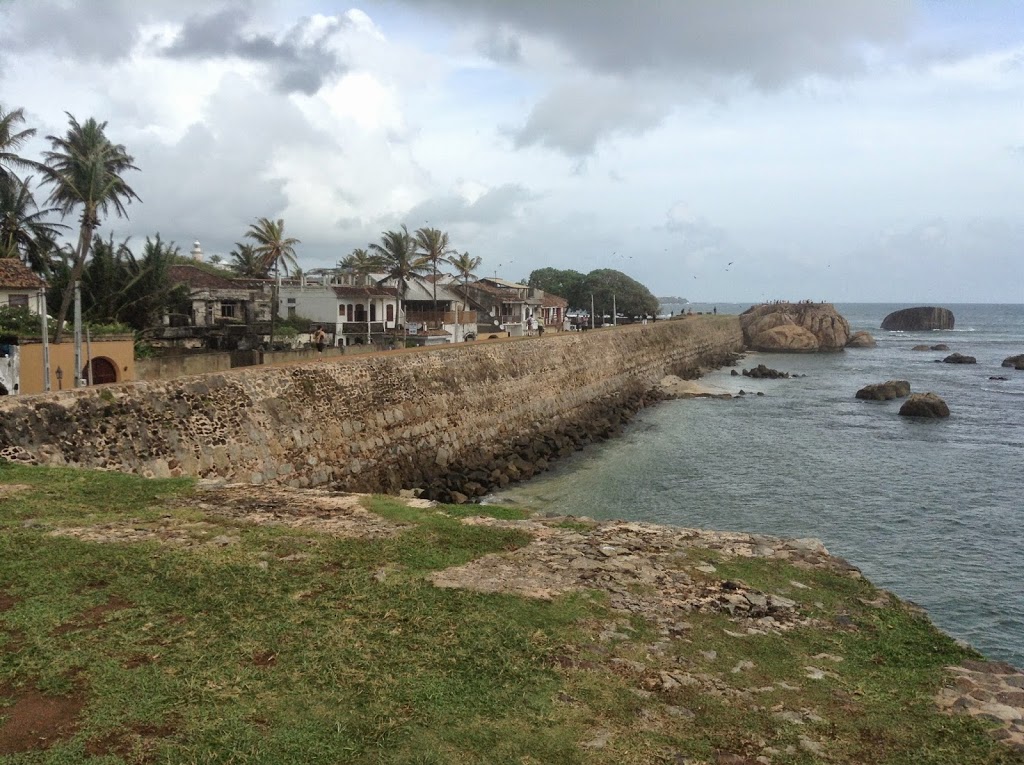 |
| The ramparts provide a wonderful walking promenade around most of the historic town of Fort Galle. |
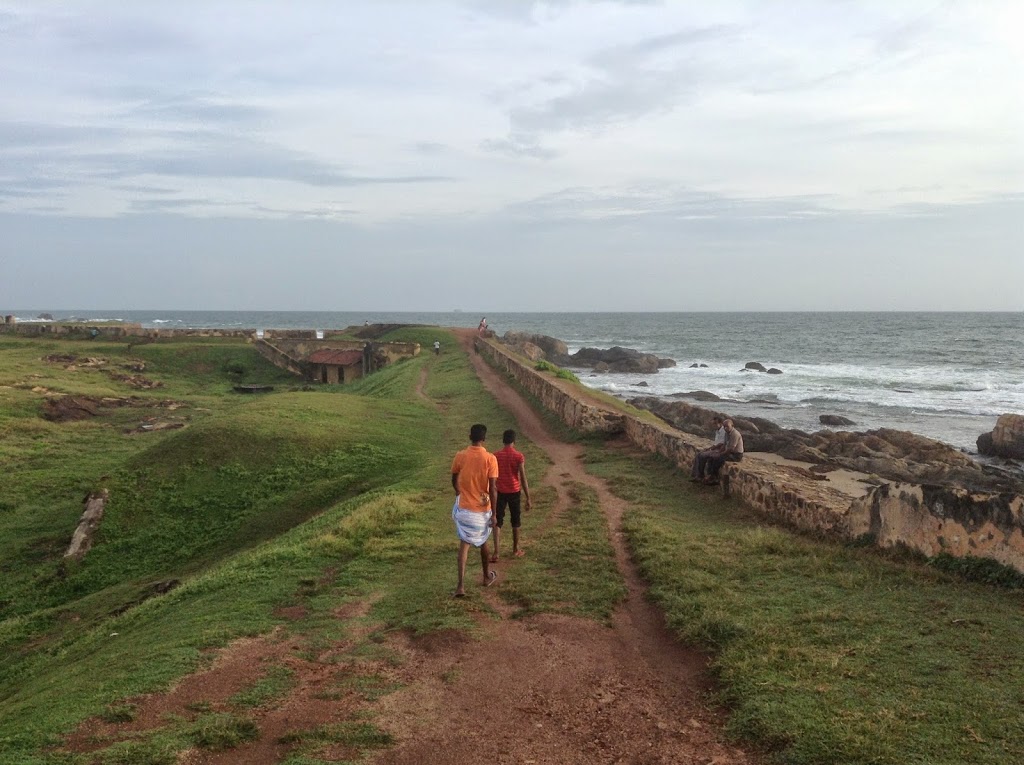 |
| Residents of Fort Galle enjoy the sea breeze above the ramparts at sunset and in the early evening. |
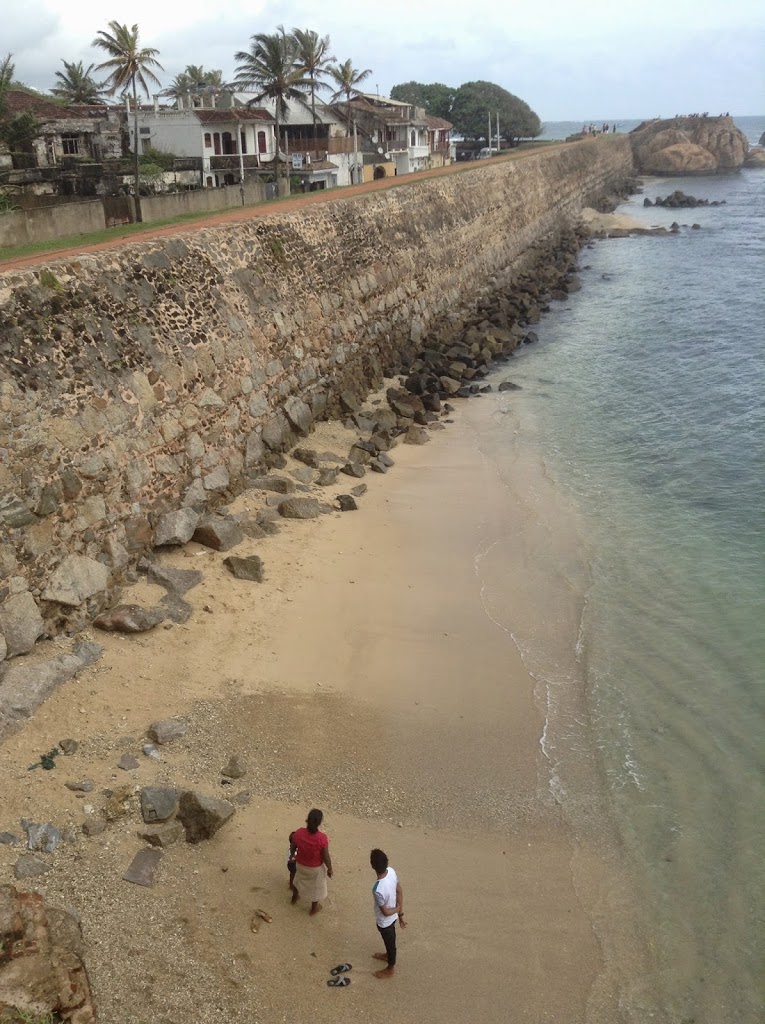 |
| A sliver of beach makes a perfect place for a dip in the clear waters of the ocean. |
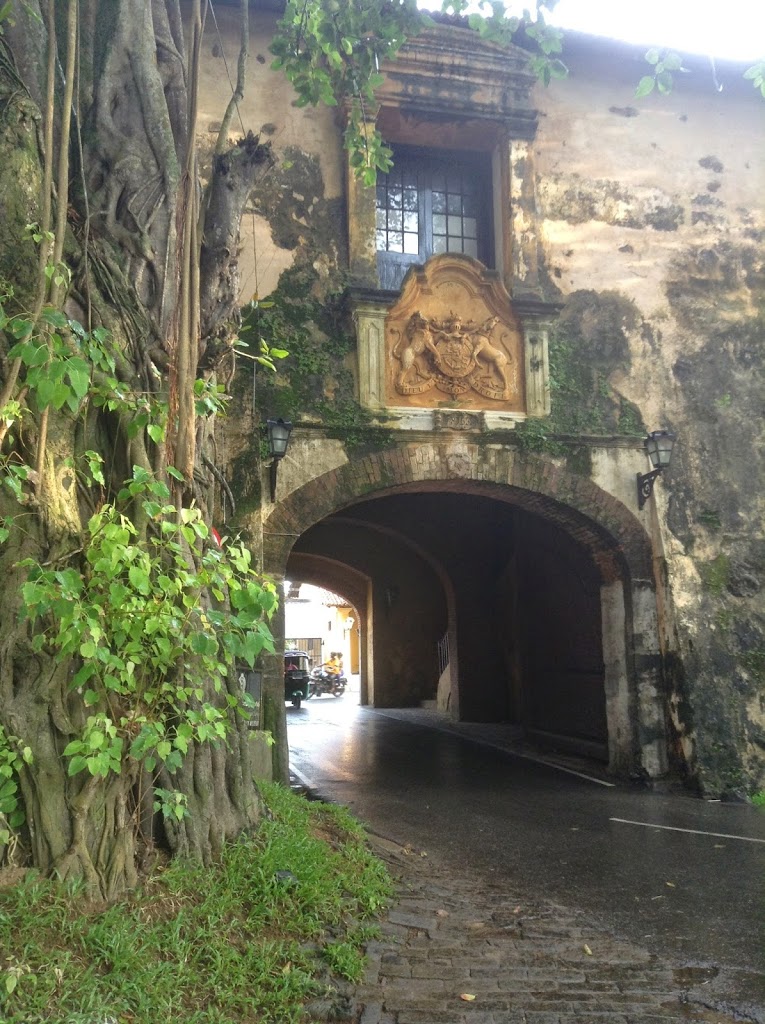 |
| A majestic gateway into the Fort Galle, fortress town. |
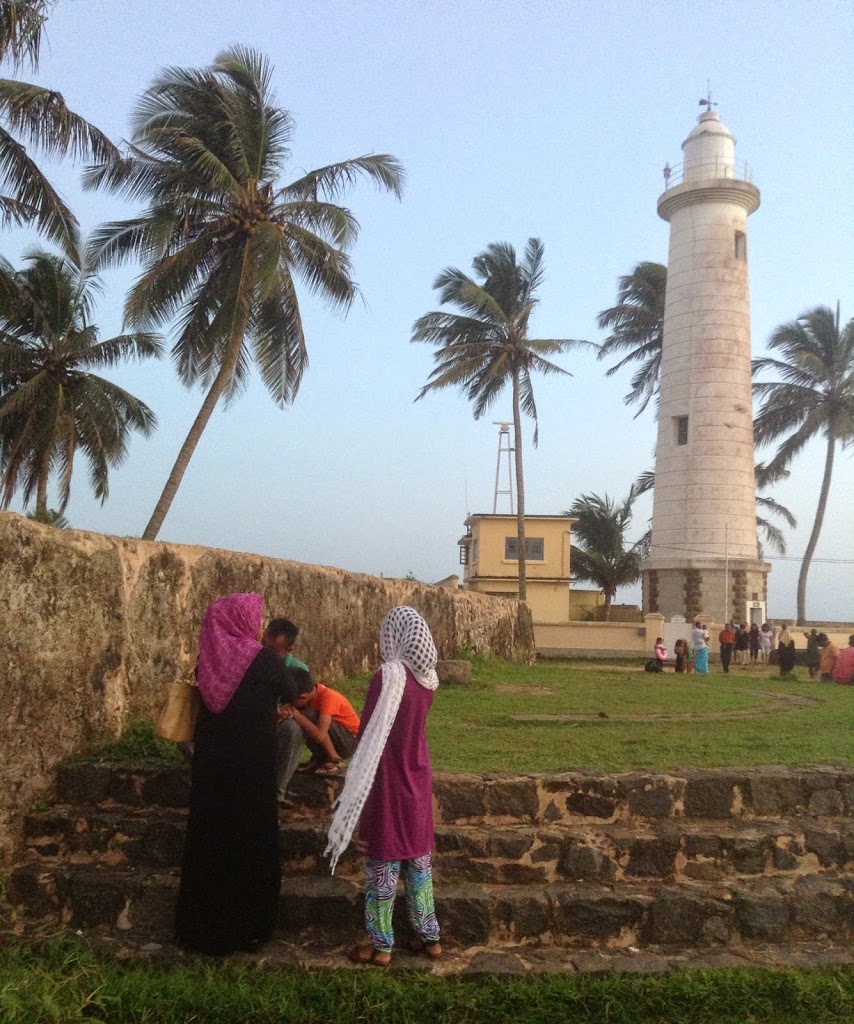 |
| A working light house at the corner of the ramparts, built in 1863, is another favorite spot at the end of the day. |
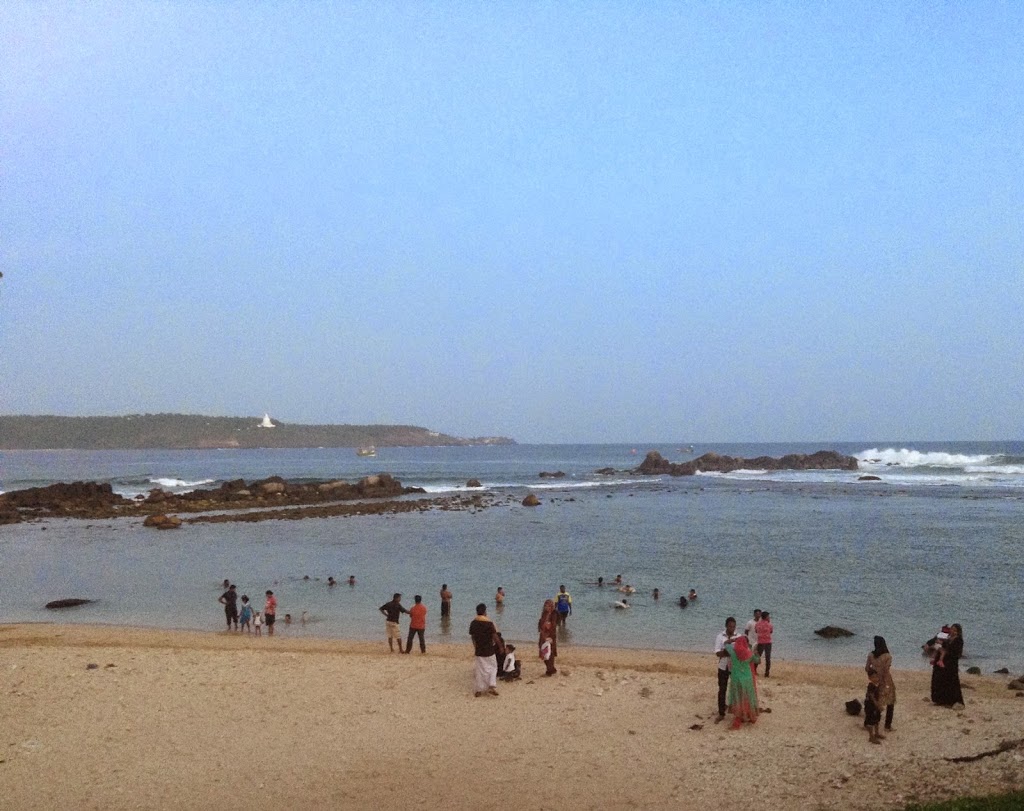 |
| The light house beach provides us an opportunity to mingle with locals, who are extremely friendly and eager to chat. |
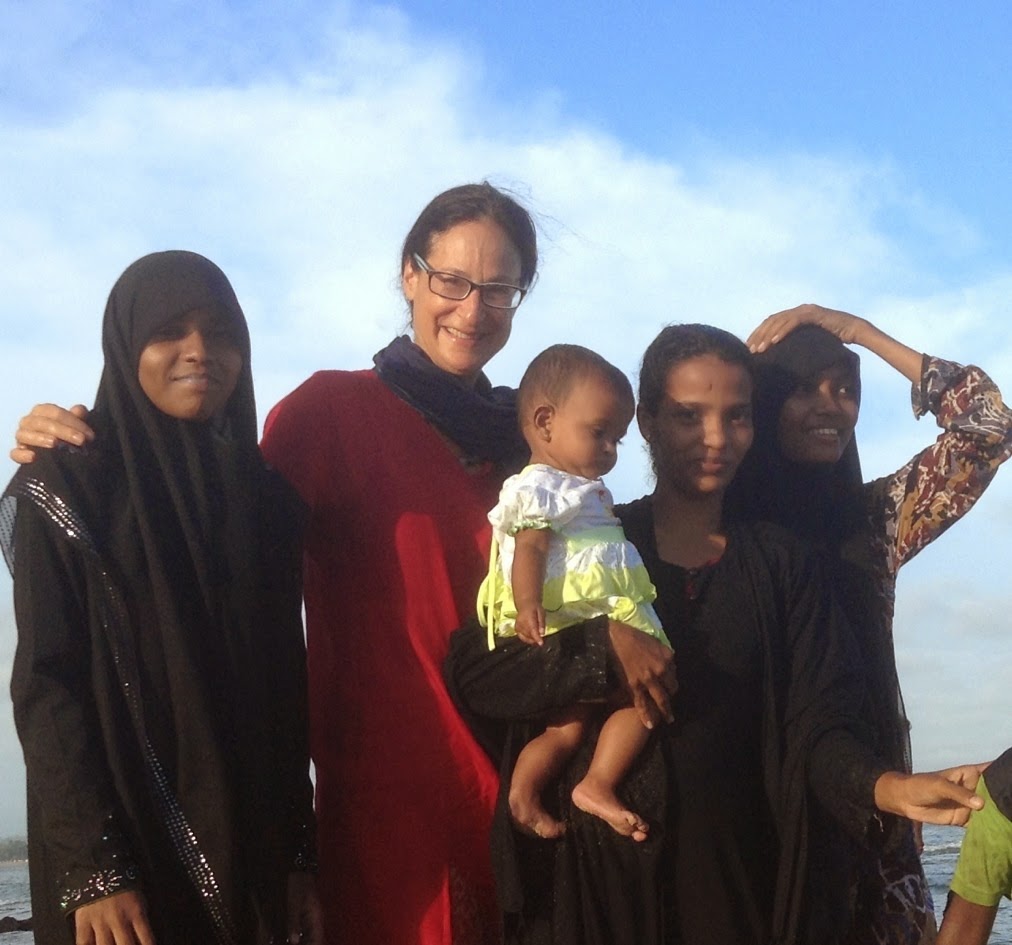 |
| At the light house beach, making friends with 3 sisters. |
The architecture of Fort Galle, in addition to the intact walls that surround the town, is magnificently preserved. Since the town became recognized as a UNESCO World Heritage site, a sustained effort and steady level of investment has facilitated the preservation of the town’s architectural treasures.
.
One splendid example of historical and architectural preservation is an 18th Century mansion, that was turned into a school, then a printing establishment, and has recently been converted into an elegant boutique hotel ~ The Fort Printers.
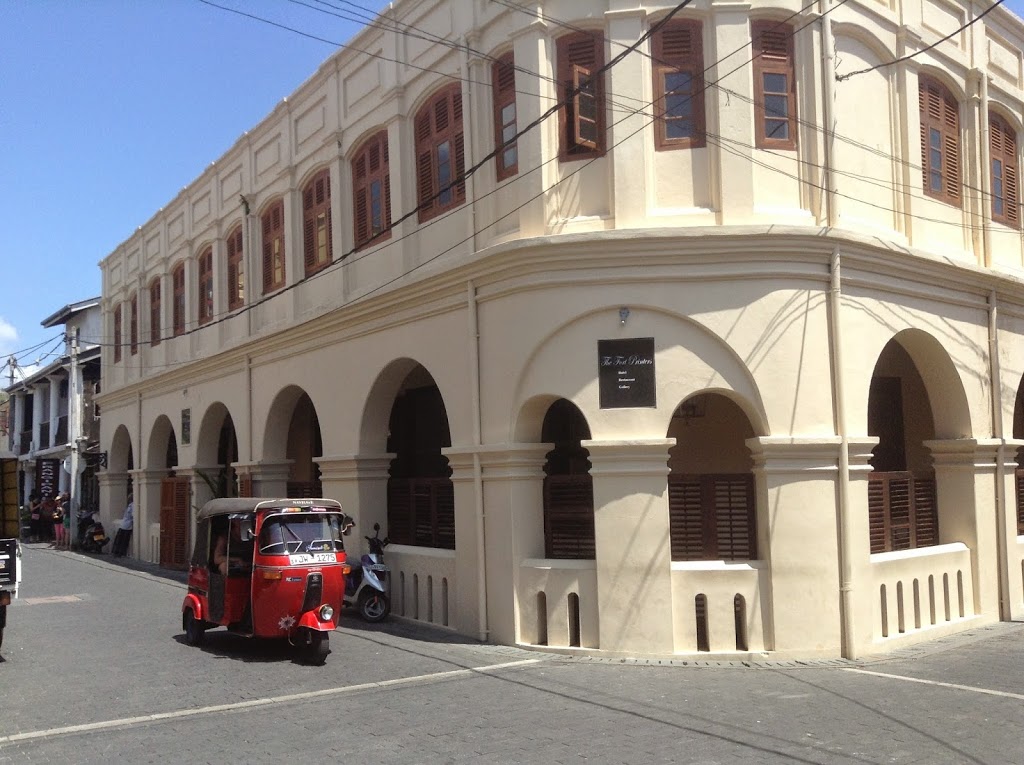 |
| The Fort Printers hotel ~ an exquisite example of historic preservation and conversion in Fort Galle. |
The spirit of the former school is maintained as the classrooms, now turned into luxury bedrooms, have kept the name of the subjects that were taught. We are staying in the “Arts” bedroom ~ rather fitting, given that Peta is a painter. The large bedroom has an interesting location in the hotel, surrounded by a dramatic wooden corridor, that lines the upper floor.
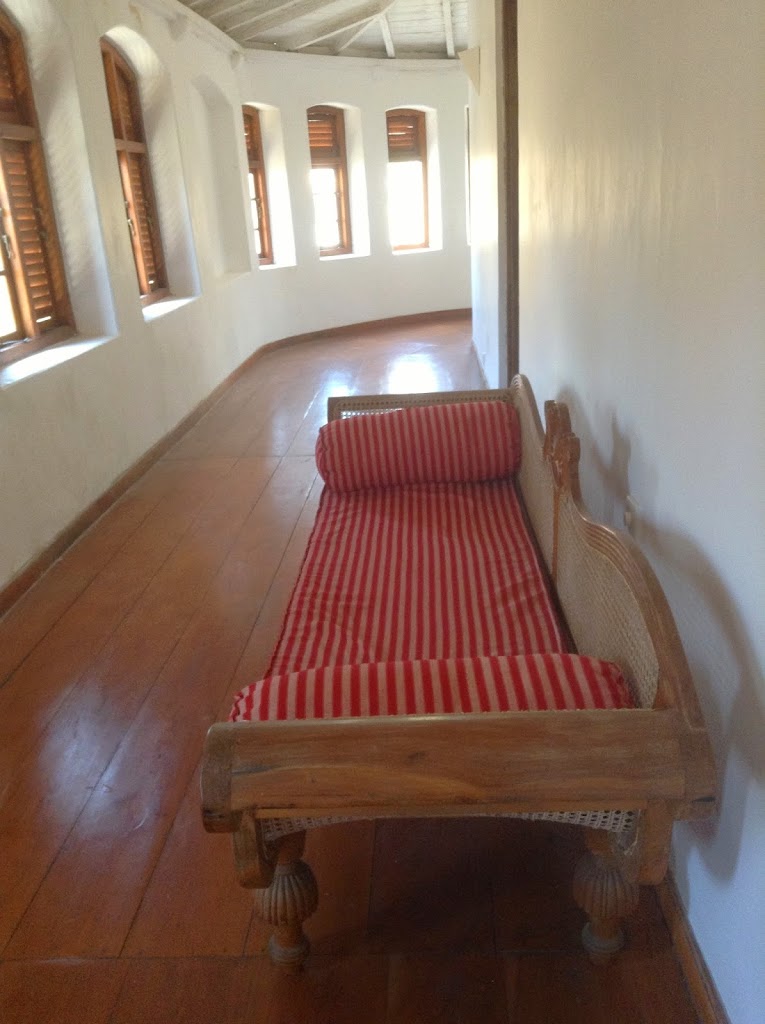 |
| The curved corner seen here from the inside, can be seen in the rounded exterior of the building (photo above). |
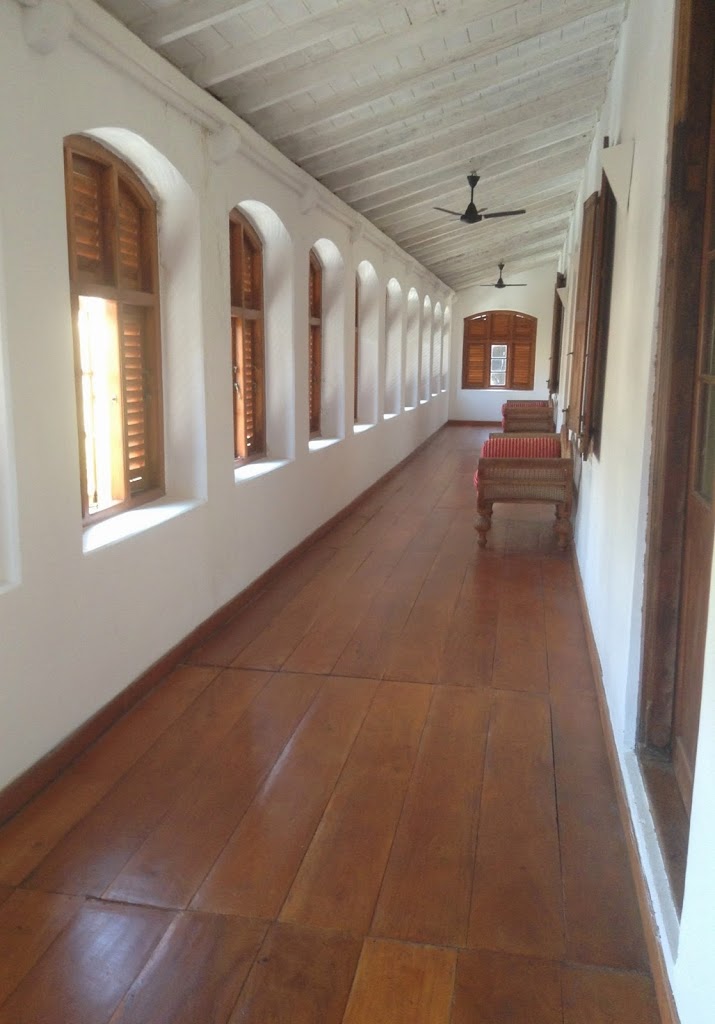 |
| Dramatic wooden walkway which surrounds the upstairs bedrooms and is reminiscent of school days gone by. |
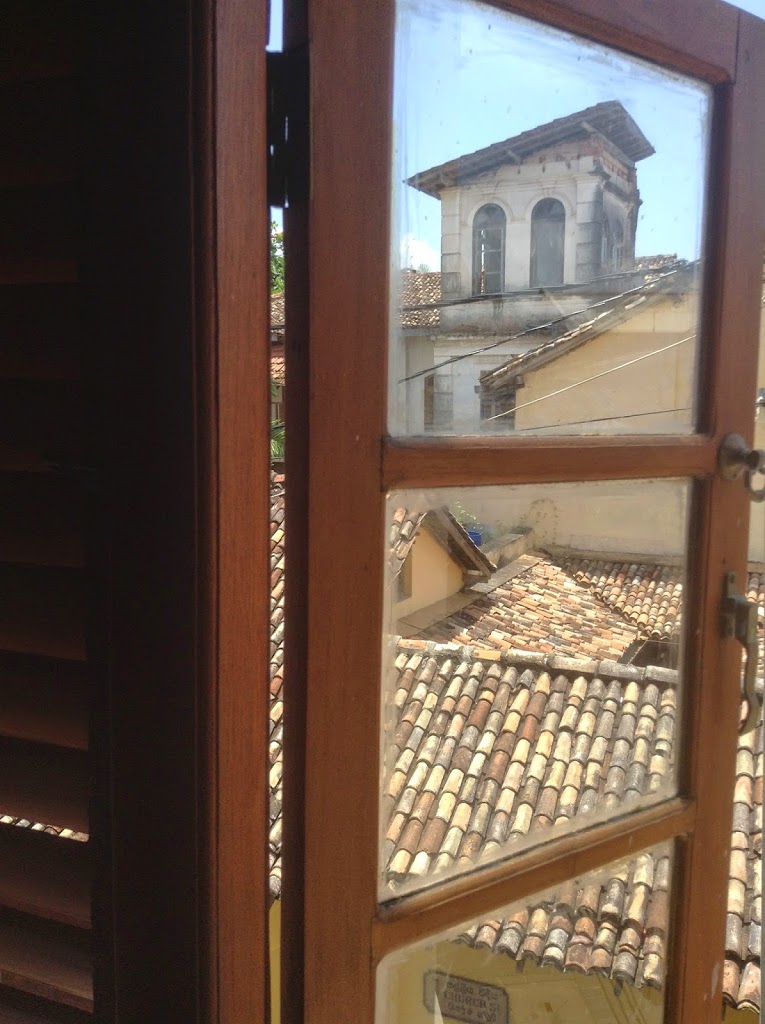 |
| View from the upstairs wooden hallway over the red ceramic roof tops. |
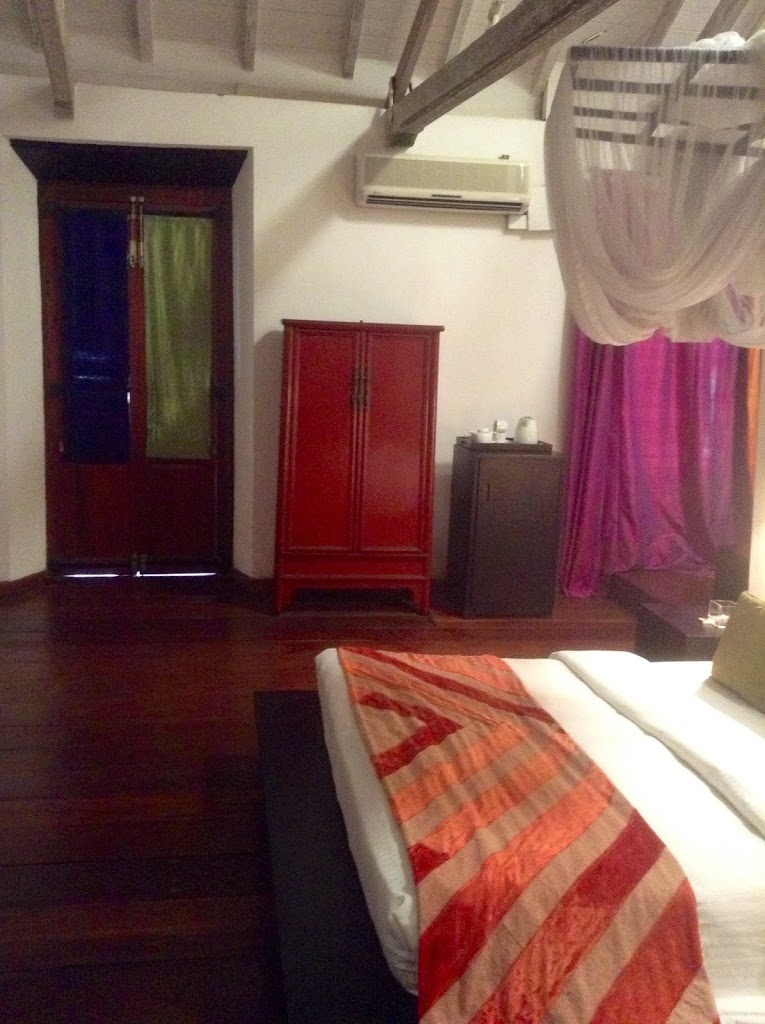 |
| The bedrooms feature red silks and velvet bringing a fun splash of color and texture to the room. |
The architecture and interior design of Fort Printers is majestic and elegant. A modern touch combines with antique pieces, in the drawing and dining rooms. High ceilings and massive arched doorways add to the splendor.
 |
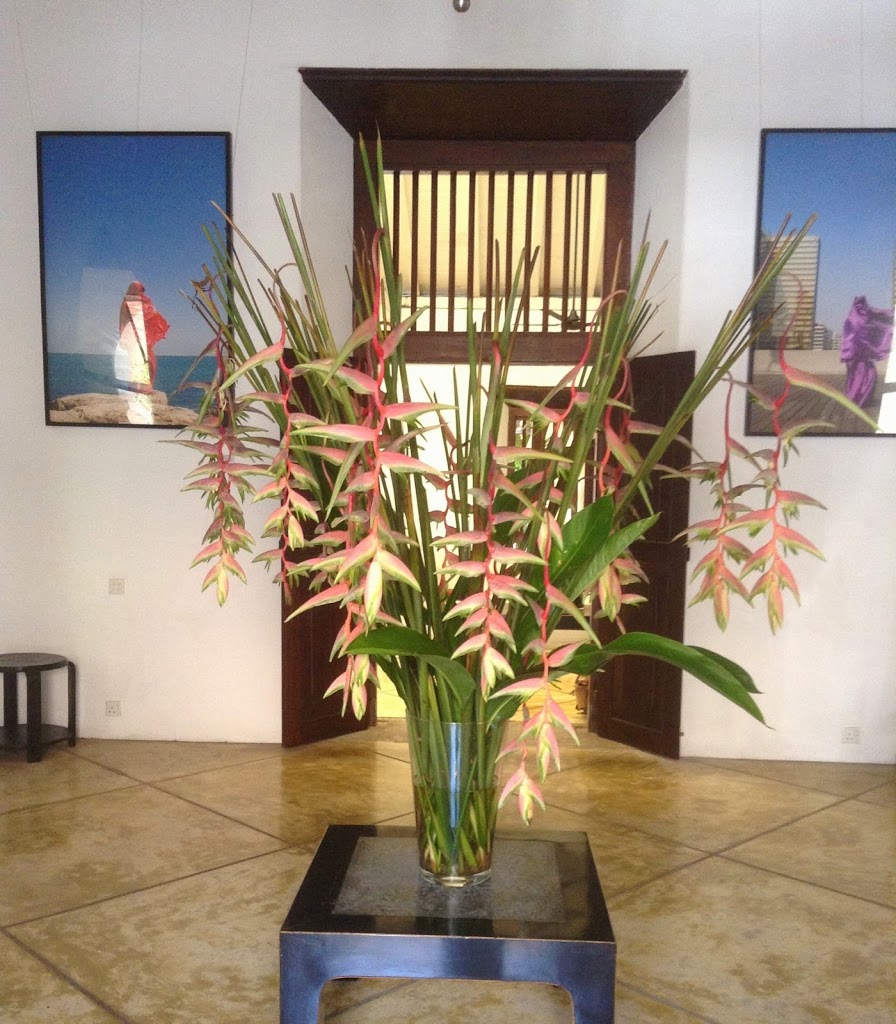 |
An internal courtyard makes for a beautiful, shaded swimming pool area and is the perfect location to have a delicious breakfast.
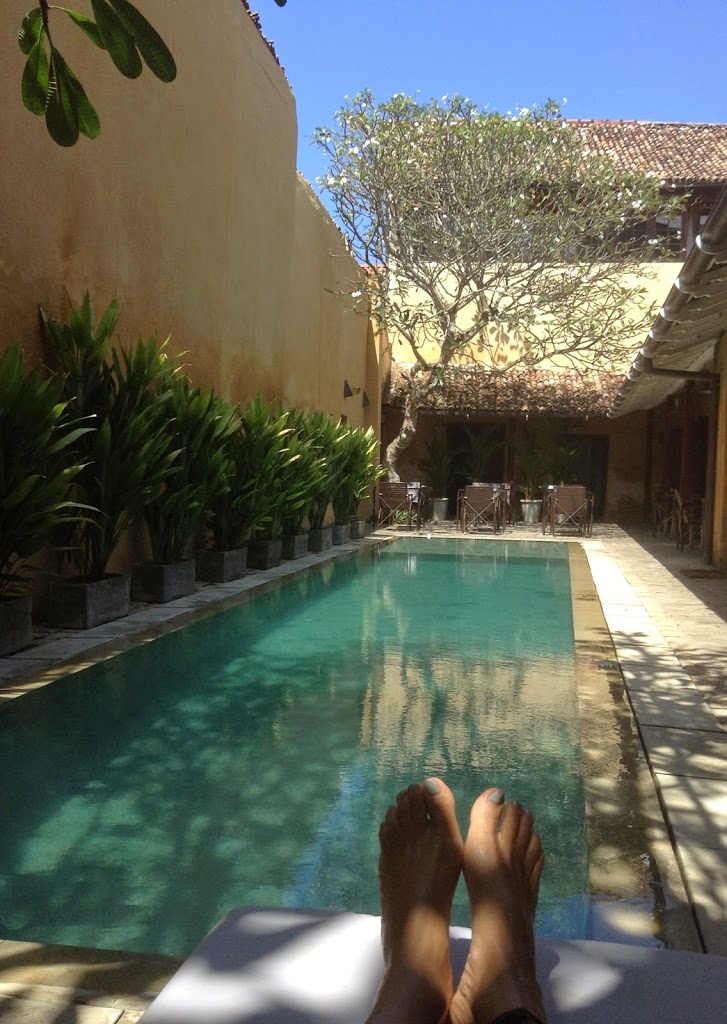 |
| Doing my “field research” at the pool. |
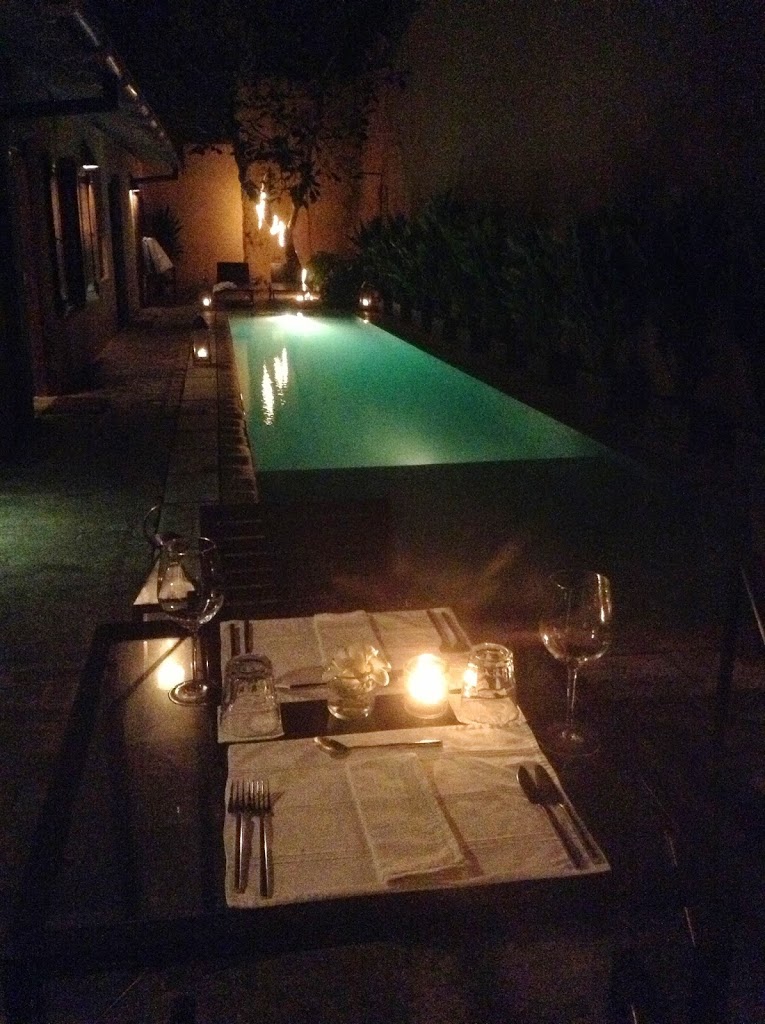 |
| The pool and courtyard area provide a romantic setting for dinner. |
One could easily linger…. were it not for the magnificent town’s alleys and streets, rich with treasures to be discovered at a slow pace.
.
The treasures, in fact, are not metaphorical at all. They are indeed treasures ~ precious and semi-precious gems ~ indeed a myriad small gem shops beckon visitors to indulge in the precious stones that Sri Lanka has earned a reputation for several centuries.
.
We have an opportunity to be educated by a gemologist, Shaffy, who has made it his life’s passion and work to explain to neophytes such as ourselves the intricacies of the gem trade.
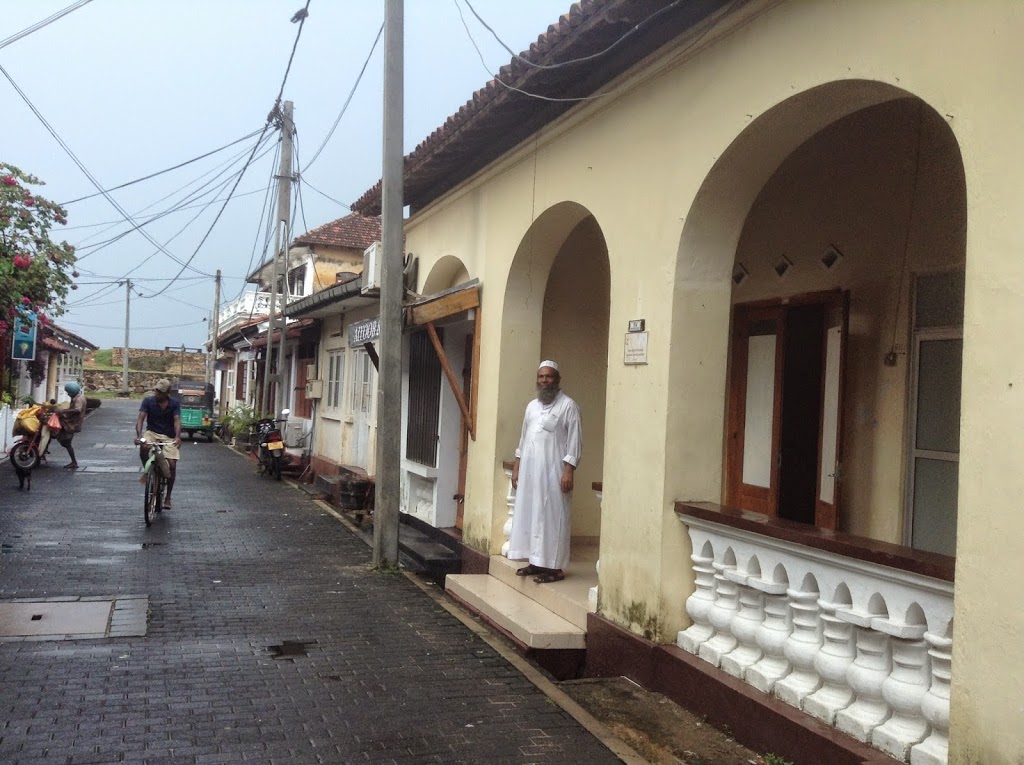 |
| Shaffy, 6th generation-gemologist in front of his home. |
There are 35 distinct gem families to be found in Sri Lanka, each with its own characteristics, and he delights in spreading the knowledge about an industry which his family has been part of, in Fort Galle, for six generations.
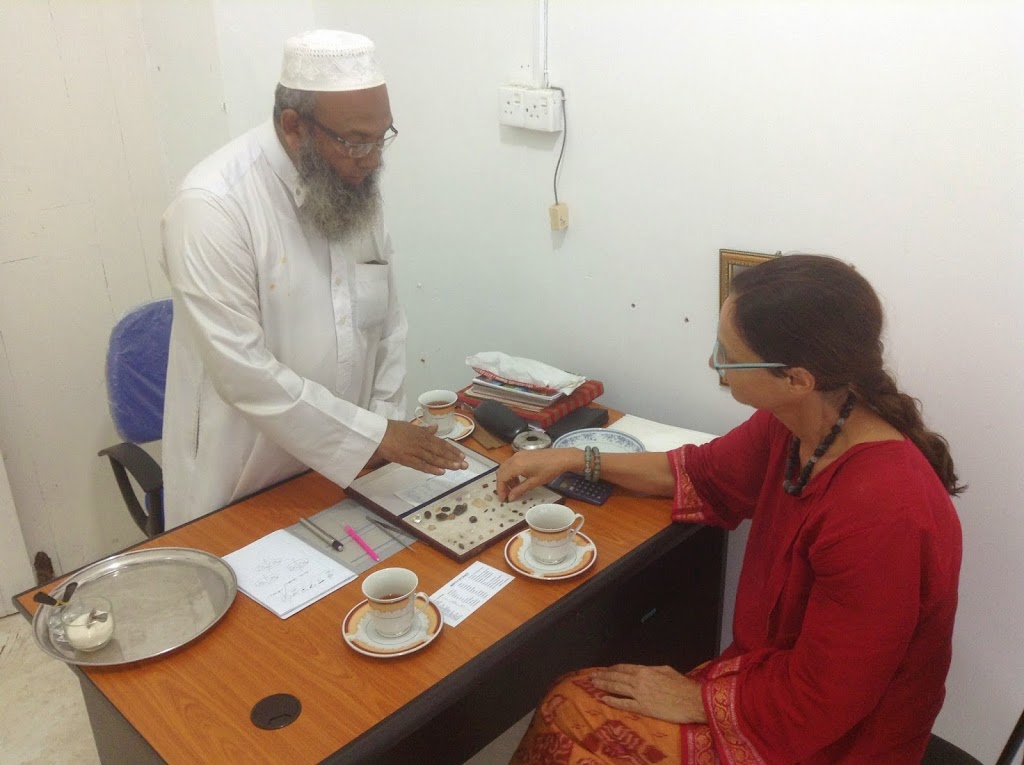 |
| Getting an expert’s introduction to Sri Lanka’s gems. |
Shaffy welcomes us into his home and we share a delicious meal prepared by his wife. Only Peta, however, meets Shaffy’s wife, because muslim modesty prevents her from interacting with men who are not in her immediate family. In the street, she wears a full shihab, with only her eyes showing. But in her home, she welcomes Peta into the kitchen where they easily fall into conversation about life and their respective children.
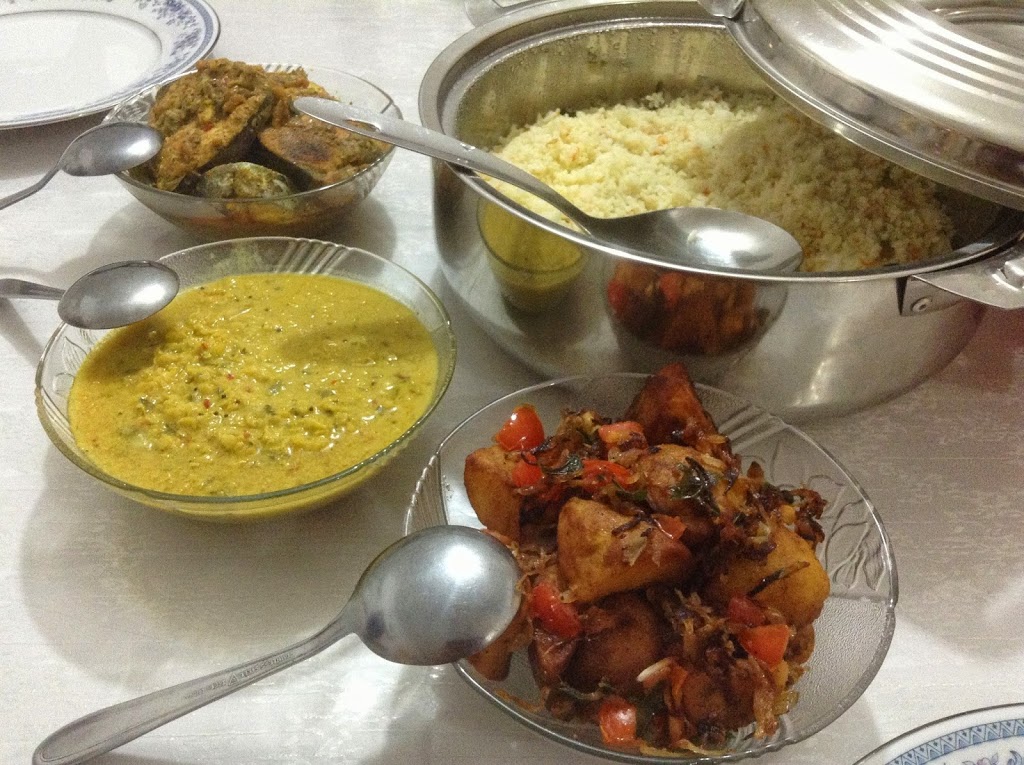 |
| Curried tuna fish, dahl (lentil stew), roast potatoes with fried onions, rice ~ A delicious home-cooked Sri Lankan meal. |
With Shaffy, a devout muslim, we enjoy a conversation about our cultural differences ~ In particular the fact that muslim parents are given 100% trust by their children to find them appropriate marriage partners when the parents deem that their children are ready.
.
We all laugh about the fact that, in contrast to Shaffy’s muslim community, we can’t quite imagine the disastrous results that might ensue if we were to try and play matchmaker for any of our four sons.
.
One extraordinary feature of Fort Galle is that, within the radius of a few streets, live four distinct but fully integrated and tolerant communities – a majority of muslims, but also a contingent of buddhists, hindus and christians.
.
The concept of religious intolerance amongst the community is a “non issue”, so much so, that several of the families we speak with are almost surprised at our questions in this regard.
Residents we speak with relate that Fort Galle mosques became distribution centers of food rations (after the tsunami) for families of all denominations. The buddhist temple followed suit and was equally magnanimous in its aid to the local community, irregardless of religious affiliation.
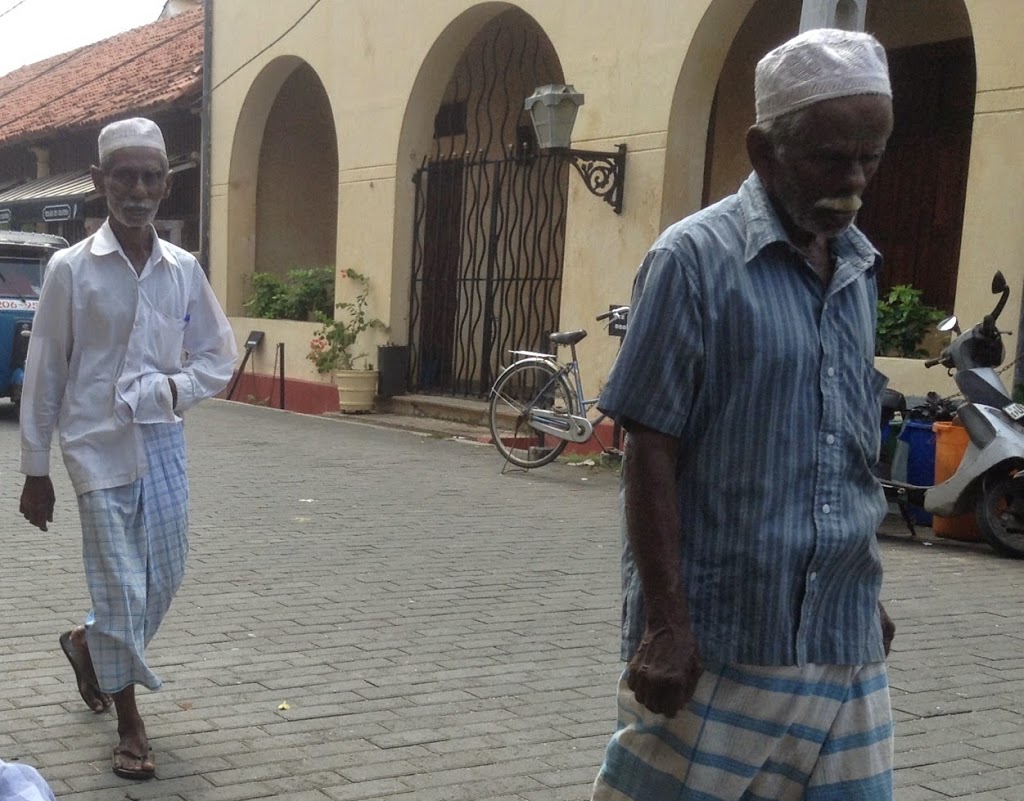 |
| Muslim elders respond to the call to prayer. |
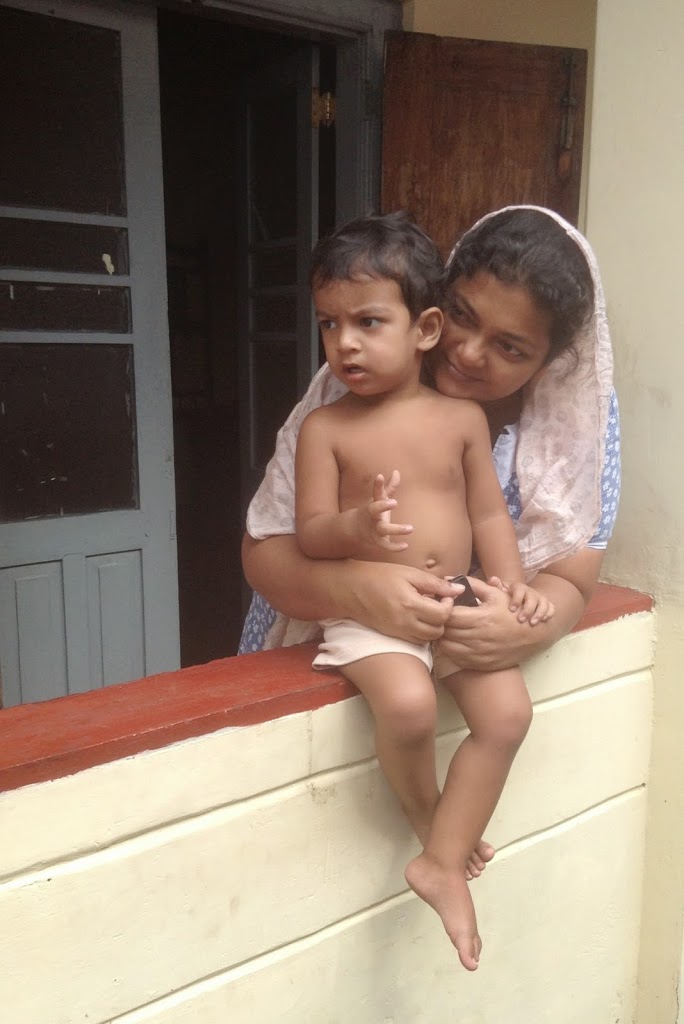 |
| Education is of prime importance to the muslim culture. Parents make many concessions to give their children the best opportunity possible for a good education. |
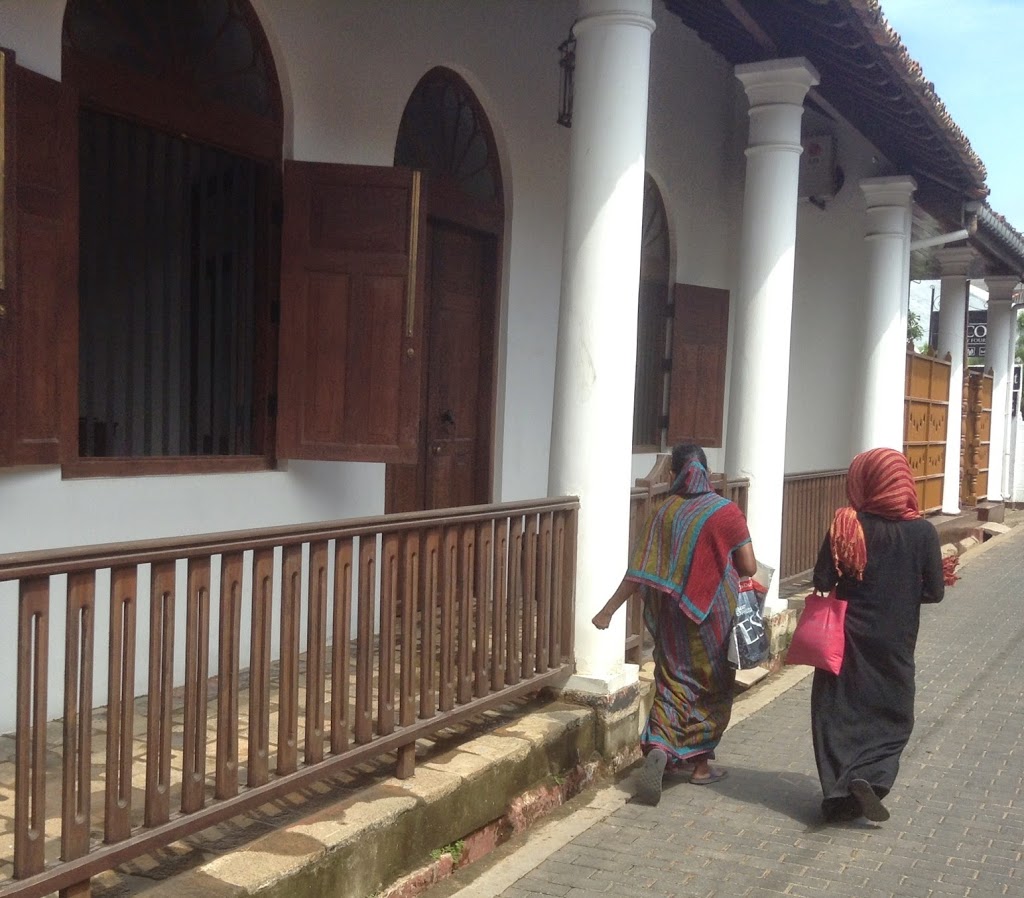 |
| A good combination of striking architecture and beautifully dressed women in saris and robes. |
In Fort Galle, people of all religions live peacefully side by side in a rare model of religious tolerance. Being exposed to this multi-cultural community and its demonstrated acceptance of people of all religions, is one of the highlights of our travel to Sri Lanka.
For more information on The Fort Printers hotel, see www.thefortprinters.com

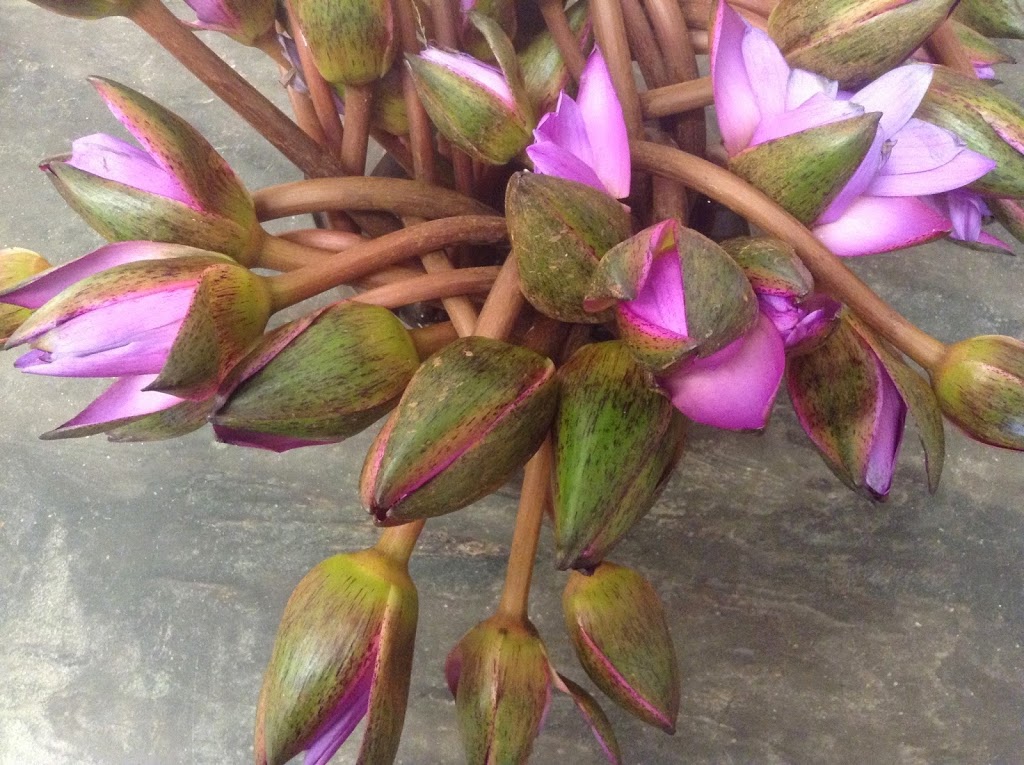
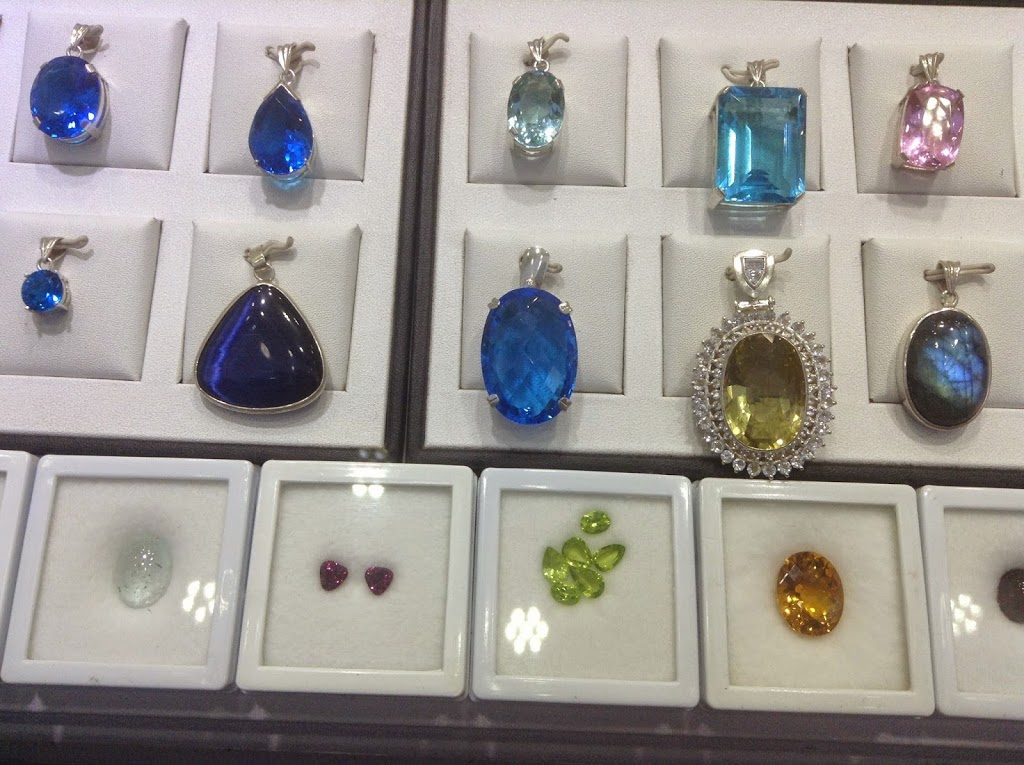
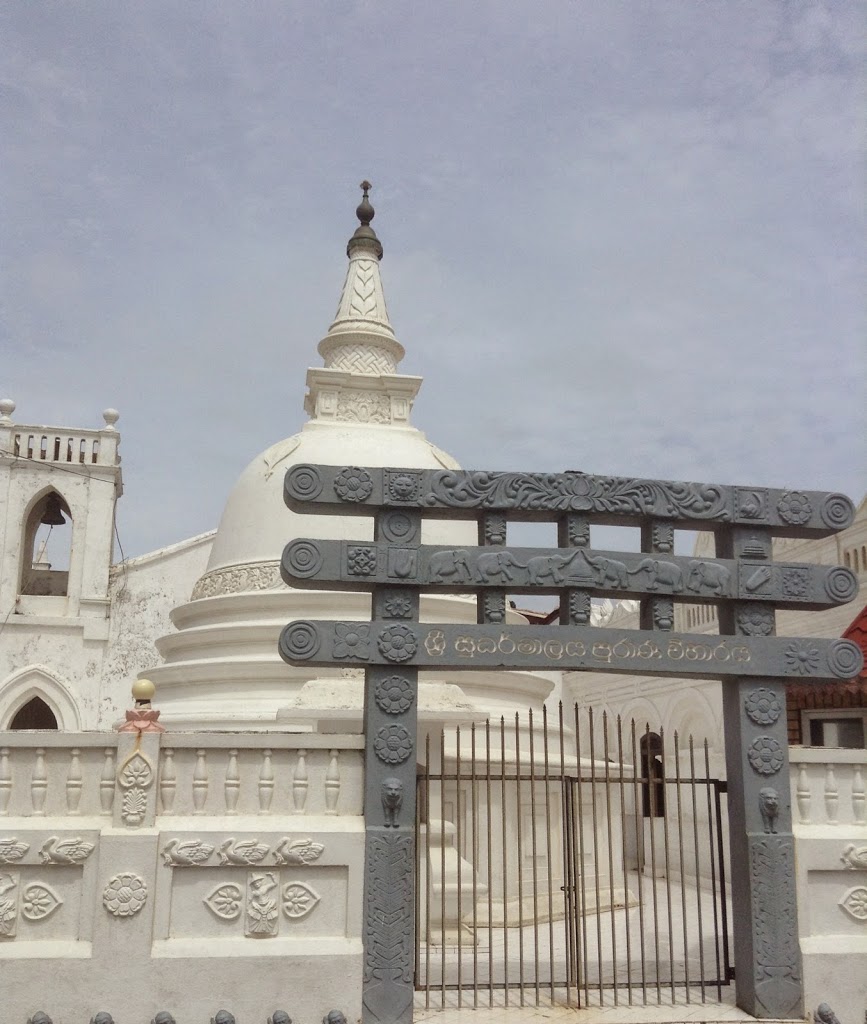
How different from the ornate architecture of Bali and other cities. This one,Fort Galle is very simple but beautiful too.
That is an accurate observation, ornate vs simple. That said, both Bali and Sri Lanka share a tropical climate and, as a result, share an architectural tradition of blending indoor and outdoor living.
Had anyone previously encountered Jews? Chabad is likely on the way!
Thank you, Sharon, for your question, which led us to doing some research… Turns out that, even though the current jewish population is virtually nil, there is a long history of jewish presence on the the island of Sri Lanka. How long? as long as it gets! as it starts with Adam, and then Noah!
Islamic legends tell about how Adam came to the island after he was expelled from Eden. They also tell that Noah’s Ark came to rest there.
Looking at historical accounts, Jews have been present there since at least the 9th century.
In the 10th century Persian traveler, Abu Zeid al Hasan, observed a great number of Jews in Sri Lanka. This community was a Sephardic community.
In the 12th century, Rabbi Benjamin de Tudela, a Spanish Jewish adventurer, reported a 3,000-person community in Sri Lanka in his book Sefer Hamasot (Book of Travel).
In the 16th century, a Portuguese captain stationed in Ceylon reported a fair where all members of the population, including “Christians, Jews, Moors and gentiles – they can all obtain the food to which they are accustomed.”
And today, yes, there is a Chabad house in Colombo…
Fantastic , what else can we say ? If we can’t achieve our dreams, lets embrace them through our loved ones and be thankful for them sharing their experiences with us… So Peta and Ben thanks for sharing,
I know we are also privileged to live here in the south of France the foothills of the Pyrenees it looks like the mountains in north Zimbabwe looking on to Mozambique as our friends keep telling us, but I love reading about your travels and discoveries.
Keep safe and let me enjoy your writing Green heart
xxx Barbara
Barbara, you are most welcome, so glad you are enjoying our blog! Part of the fun is sharing our experiences, agreed. xxx
Thanks for looking into the Jewish question. I do love the idea of an adventure rabbi. Do you have any thoughts on why the Jews left?
Sharon… the same phenomenon that occurred in many Jewish enclaves in Asia: with the creation of 1948 Israel, Jewish communities started to respond to the call to populate Israel after independence.
Ben
Hello
Im a french gemologist. Im trying to contact Shaffy the gem dealer from Galle. I met him several time but unfortunately I lost his phone number… I need some clues (full name, email, phone number) to get in touch with him again!
Thanks
Hi there,
Your note arrives as we are about to leave for India tomorrow morning for a month. But when we return to Sri Lanka, I would be happy to go to see Shaffy and get you his email address.
Please email me: petakaplan@hotmail.com, so that we can connect.
Peta